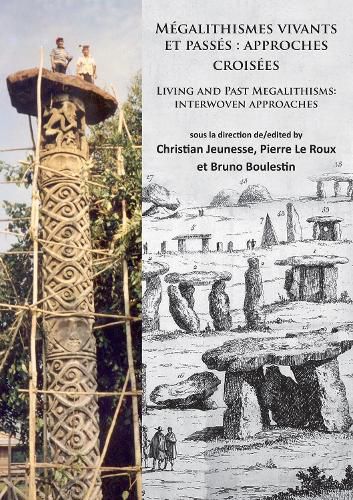Readings Newsletter
Become a Readings Member to make your shopping experience even easier.
Sign in or sign up for free!
You’re not far away from qualifying for FREE standard shipping within Australia
You’ve qualified for FREE standard shipping within Australia
The cart is loading…






Megalithic monuments from Neolithic Europe have long been considered as rough copies of the monumental architectures built by the first civilizations of the Near East and Eastern Mediterranean. When radiocarbon dating jeopardized this diffusionist pattern, though, specialists could not but wonder why and how these Neolithic societies, usually considered as small ‘village communities’, had erected such monuments. In order to answer these questions and seek explanations in the social, political or religious contexts of recent or present megalith-building societies, the ethnological frame of references has been referred to on a regular basis. This volume comprises the papers presented by prehistorians and ethnologists at the two multi-disciplinary round tables held in Strasburg in May 2014 and May 2015. Their purpose was, with the help of both case studies and more synthetic works, to discuss how the patterns drawn from the observation of ‘living’ megalithic societies have been used to try and shed light on the functioning of European Neolithic societies, the epistemological problems raised by this transposition and the relevance of ethnology-based archeological explanations. The book is composed of three sections: the first one deals with some methodological reflections, the second and third ones with the ‘living’ or recent megalithisms of respectively the Indonesian Archipelago and Ethiopia.
$9.00 standard shipping within Australia
FREE standard shipping within Australia for orders over $100.00
Express & International shipping calculated at checkout
Megalithic monuments from Neolithic Europe have long been considered as rough copies of the monumental architectures built by the first civilizations of the Near East and Eastern Mediterranean. When radiocarbon dating jeopardized this diffusionist pattern, though, specialists could not but wonder why and how these Neolithic societies, usually considered as small ‘village communities’, had erected such monuments. In order to answer these questions and seek explanations in the social, political or religious contexts of recent or present megalith-building societies, the ethnological frame of references has been referred to on a regular basis. This volume comprises the papers presented by prehistorians and ethnologists at the two multi-disciplinary round tables held in Strasburg in May 2014 and May 2015. Their purpose was, with the help of both case studies and more synthetic works, to discuss how the patterns drawn from the observation of ‘living’ megalithic societies have been used to try and shed light on the functioning of European Neolithic societies, the epistemological problems raised by this transposition and the relevance of ethnology-based archeological explanations. The book is composed of three sections: the first one deals with some methodological reflections, the second and third ones with the ‘living’ or recent megalithisms of respectively the Indonesian Archipelago and Ethiopia.